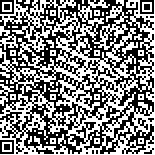| |
|
|
| 本文已被:浏览 524次 下载 579次 |

码上扫一扫! |
|
|
| 智慧景观背景下物联网技术研究进展与展望 |
|
邹尚恩, 刘开鑫, 孙晓辰, 胡一可
|
|
天津大学
|
|
| 摘要: |
| [目的]智慧景观旨在通过数据驱动将景观项目数字化、网络化、可视化。明确智能景观背景下物联网技术的相关研究进展,对促进景观项目的精准化和科学化具有重要意义。[方法]以“景观”“物联网”为主题,检索Web of Science(WoS)数据库2013—2022年的相关英文文献,采用科学计量方法,利用COOC13.4及VOSviewer1.6.13计量软件,对文献数量、作者、国家、期刊、关键词进行可视化知识图谱分析。[结果]结果表明,物联网技术与景观项目周期密切相关,研究集中于勘察与测绘、规划设计、环境监测、信息管理四大方面。[结论]分析得出物联网技术的具体应用,能有效促进其在空间信息化、规划智能化、治理智慧化三大方面的发展,以期为今后景观项目周期中物联网技术的应用发展提供参考。 |
| 关键词: 风景园林 物联网 智慧景观 文献计量学 可视化分析 |
| DOI:10.12409/j.fjyl.202301020002 |
| 分类号:TU986 |
| 基金项目: |
|
| Research Progress and Prospect of Internet of Things Technology in the Context of Smart Landscape |
|
TSOU Shangen, LIU Kaixin, SUN Xiaochen, HU Yike
|
|
Tianjin University
|
| Abstract: |
| [Objective] In recent years, the Internet of Things (IoT) has advanced greatly in such aspects as deep coverage, massive connectivity, real-time processing and intelligent computing, which can gather multiple data points, quickly perform intelligent analysis and feedback, and connect physical and virtual spaces, thus providing an effective implementation path for smart landscape. At present, the use of IoT technology mainly focuses on infrastructure, such as cities, buildings and transportation facilities; however, few studies have been conducted in the context of smart landscape to completely define and generalize the value of IoT technology in landscape engineering. This research investigates relevant frontier English literature on the issue of IoT technology published during the period from 2013 to 2022 to grasp the development state, research hotspots and future trends of IoT technology in the context of the smart landscape. This research may serve as a starting point for domestic researches in relevant fields. [Methods] In the theme of “landscape” and “Internet of Things”, this research searches the Web of Science (WoS) database for English literature published during the period from 2013 to 2022, and conducts visual knowledge graph analysis of the number of literature, authors, countries, journals and keywords by scientometrics method using COOC13.4 and VOSviewer1.6.13 metrics software. First, relevant researches of the aforesaid literature in the past 10 years are visualized and analyzed to clarify their research status; second, the authors, journals, countries and keywords of the literature are analyzed by coupling network analysis, co-occurrence analysis and cluster analysis to uncover their research hotspots; finally, the mutation detection algorithm is used to predict their development trends. The literature on cutting-edge research hotspots in the past 10 years is extracted, and the application of IoT technology in smart scenic areas is summarized using content analysis. [Results] The analysis of the research results reveals that IoT technology plays a key role in the four major aspects of landscape project cycle: survey and mapping, planning and design, environmental monitoring, and information management. In the survey and mapping phase, the main task is to measure and visualize the distribution, distance and angle of various natural elements, human phenomena and artificial facilities, such as topography, plant growth and road traffic, and provide accurate data support for planning and design through various sensor technologies. Compared with traditional survey and mapping methods, intelligent survey and mapping by IoT technology can ensure the timeliness, accuracy and comprehensiveness of data obtained. In the planning and design stage, according to research data and crowd demand, intelligent algorithms can be applied to develop corresponding landscape plans, and real-time data collected by IoT can be used for modeling and simulation to predict the effect and improve the practicality of such plans for further optimization. In the environmental monitoring stage, landscape projects often involve complex natural environment and human and social backgrounds, which can be monitored and protected to reduce the impact on the environment and prevent the decline of landscape level. Compared with the survey and mapping stage, environmental monitoring emphasizes more on dynamic changes and needs to be combined with IoT for intelligent processing and feedback. The deep coverage, massive connection, real-time processing, and intelligent computing capability of IoT technology can provide a feasible way for environmental monitoring of landscape construction. In the information management stage, IoT, as an emerging digital platform, has a huge potential for information management of landscape construction project operation, and its ability to connect “people and things” and “things and things” can connect the real demands of the public and the management practice of decision makers in project management. [Conclusion] The analysis concludes that the specific application of IoT technology can effectively promote the three major aspects of spatial informatization, planning intelligence and governance wisdom, and thus provide a reference for the development of IoT applications in future landscape project cycles. In terms of spatial informatization, IoT technology needs to be combined with spatial information analysis technology, computer vision technology and other information technologies to enhance data processing and analysis capabilities and promote information intelligence. In terms of planning intelligence, IoT technology can cooperate with intelligent optimization algorithms to efficiently and accurately calculate complex qualitative description data in the landscape field, transform such data into quantitative analysis, and derive planning design. In terms of governance intelligence, the information management platform established based on IoT technology can ensure that the object information can be widely and accurately perceived by the subject, which can help enhance public trust in the government, promote public participation in government decision-making and improve the quality of decision-making, while improving the public’s risk awareness and reducing losses through risk prediction, thus constituting a new governance model in harmony with the current needs of society. |
| Key words: landscape architecture smart landscape Internet of Things (IoT) bibliometrics visual analysis |
| 引用本文: | 邹尚恩,刘开鑫,孙晓辰,胡一可.智慧景观背景下物联网技术研究进展与展望[J].风景园林,2023,30(8):64-71. |
| TSOU Shangen,LIU Kaixin,SUN Xiaochen,HU Yike.Research Progress and Prospect of Internet of Things Technology in the Context of Smart Landscape[J].Landscape Architecture Journal, 2023, 30(8):64-71. |
|
|
|
|
|